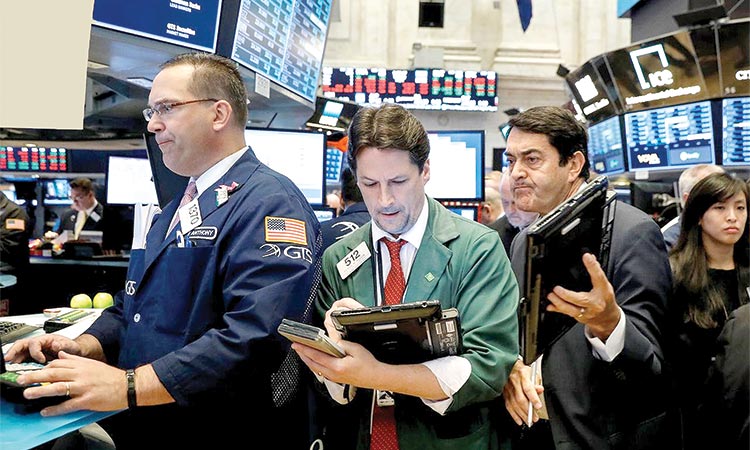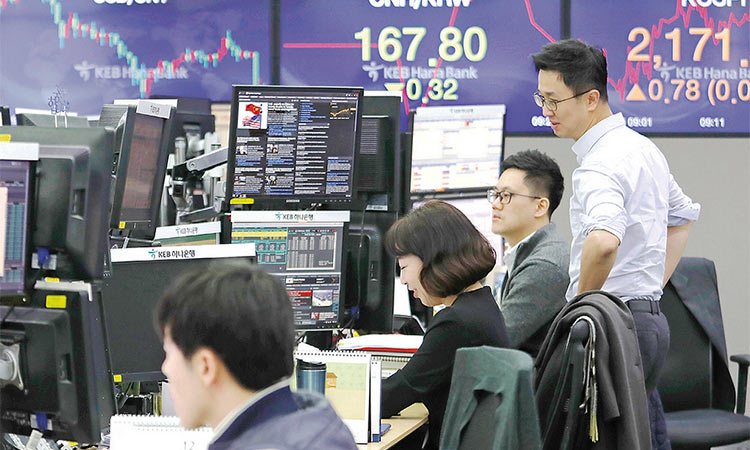China domestic tourism rebounds but still below last year’s levels

Domestic tourists at a shopping town on the outskirts of Beijing on Monday. Associated Press
Tourism sites were visited by 637 million domestic tourists over the eight-day National Day holiday that started on October 1, 79% of last year’s total, China’s Ministry of Culture and Tourism said in a statement.
Domestic tourism revenues stood at 466.56 billion yuan ($68.7 billion), it added, down from nearly 650 billion yuan a year earlier.
That, however, marked an improvement from China’s last long holiday period over May 1-5 for Labour Day, when 115 million domestic tourists travelled and tourism revenues were only 47.56 billion yuan.
Since then, COVID-19 cases have ebbed, with no new community transmissions in mainland China since early August.
“The quick rebound may have alleviated concerns about China’s growth momentum, but it is too early to be complacent,” Betty Wang, senior China economist at ANZ, wrote in a note.
The October Golden Week figures undershot last year’s levels, even though the holiday period was extended this year by a day as it overlapped with China’s mid-autumn festival. The figures also defied some expectations that domestic tourism would be much stronger with cross-border travel restrictions and a dearth of international flights deterring millions of Chinese nationals from overseas trips.
“Tourism revenue during the holiday period only rebounded to 69.9% of last year,” Wang said, noting core inflation trended lower year-on-year to 0.5% growth in July and August, the lowest level since 2010.
The soft CPI growth suggests domestic demand remained fragile.
“We failed to see a so-called retaliatory rebound (in consumption),” said Zhang Qidi, visiting researcher at the Center of International Finance Studies at the Central University of Finance Studies in Beijing.
Zhang does not expect consumer spending to perform strongly in the near term, noting that middle and low-income households have been hit by the economic fallout of the pandemic.
Household income fell 1.3% on the year as of end-June versus a 5.8% increase at end-December, according to official data. “It will still take a long time for income growth to return to normal,” Zhang said.
Separate data from the commerce ministry showed average daily sales at key retail and catering enterprises rose 4.9% over the October holiday period from a year earlier, with sales totalling 1.6 trillion yuan ($238 billion).
It also noted strong car sales growth in some areas around the country, with sales in Beijing 23.5% higher.
Car trips featured prominently this year, according to state media, contributing to highway congestion and also indicating continued caution over coronavirus transmissions and outbreaks.
Meanwhile, the yuan leapt to a 17-month high against the dollar on its first trading day after a week-long national holiday and was set for its strongest one-day gain since 2005, when Beijing de-pegged its currency from the greenback. Market sentiment was boosted as US Democratic presidential candidate Joe Biden widened his lead over President Donald Trump in a raft of new polls.
Currency traders said the results were positive for the yuan as many investors expect a Biden Administration to drop a unilateral tariff approach in its dealings with China, lowering the risk of a fresh trade war. Trade disputes between the United States and China have been the key factor weighing on the yuan in recent years. Friday’s steep gain also came as the currency played catch-up to its offshore counterpart after the Golden Week holiday, and was guided higher by the central bank, traders and analysts said.
The onshore spot yuan opened at 6.7300 per dollar and jumped to a high of 6.7089 at one point, the strongest level since April 23, 2019. It was changing hands at 6.7126 at midday, 864 pips or 1.29% firmer on day, marking the biggest one-day rise since July 2005 when China revalued its currency by 2.1% and dropped a decade-old peg against the dollar.
“Today’s CNY fixing had a strong bias. I think the main message is that the PBOC is allowing further renminbi appreciation at this level, so markets are positioning for a renminbi rally,” said Ken Cheung, chief Asian FX strategist at Mizuho Bank in Hong Kong.
“The US election is another driver. Polls are showing that Biden is taking the lead,” Cheung said. “It means the risks of resuming a new trade war are getting smaller, so I think this is positive for the renminbi.” Prior to the market opening, the People’s Bank of China (PBOC) set the midpoint rate at 6.7796 per dollar, 109 pips firmer than Reuters’ estimate of 6.7905.
Reuters







